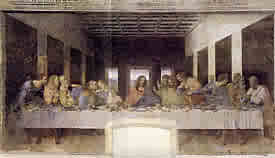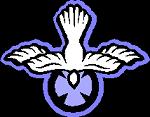After the death and resurrection of Christ non-Jews were called by God to share that special relationship.
Although the whole of the Jewish people were the Royal Priesthood, their divinely inspired religion was provided by God with a High Priest and orders of Levites and Priests, to enable them to exercise that Royal Priesthood.
The Catholic Church, which God grew out of that religion and people, has a similar pattern.
The right to become a Jewish Priest was passed from father to son, and was the sole preserve of one tribe in Israel. In the Catholic Church, of which the Church of England is part, there is no such hereditary right.
God calls a person to the privilege and responsibility of priesthood as an individual sometimes directly and sometimes indirectly.
Christ became the eternal High Priest when He sacrificed Himself on the altar of the cross. Before He died, however, He chose twelve men to be Apostles to continue His work and ministry, and they in turn appointed Bishops to succeed themselves, who appointed Priests and Deacons to assist them and share in their work.

And so Christ, who is our heavenly High Priest, provided His Church with High-Priest-like Bishops and with orders of Deacons and sacrificial Priests, to enable the Church to exercise its Royal Priesthood.

Similarly, that is just what Priests do: build bridges, and repair them.
Bishops and Priests build spiritual bridges, between heaven and earth, or more exactly maintain the bridge built by Christ the High Priest.
They do this by celebrating the seven Sacraments, which form the bridge between heaven and earth, in and through which Christ continues His work on earth.

Since then the authority and power to ordain has been transmitted through the Catholic Church along the line of Bishops. They do this by the laying-on of hands with prayer. At the heart of the Ordination service, then, is the action of laying-on hands with prayer.
When a person is Ordained or Consecrated a Bishop, one or more Bishops lay their hands on his head, whilst calling down the Holy Spirit, and asking God to empower him to perform the office and work of a Bishop in the Church. When a person is ordained Deacon, only a Bishop lays his hands in the same way.
When ordained Priest, the other Priests present join with the Bishop in laying on their hands, which symbolises their unity with the ordinand.
A very ancient custom, which had fallen into disuse in the Church of England, is the anointing of the new Priest's hands with Chrism. Many Bishops are now reintroducing this wonderful sign of the Holy Spirit.
At one point during the service the ordinand is presented with a Bible, to symbolize and remind him of where his authority comes from.
Also increasingly in the Church of England, a newly ordained Priest is also presented with other symbols of the new office -Patten and chalice.

As signs of Priest-craft, used in the offering of the sacrifice of the Mass or Eucharist.
An important thing to remember is that once a person has been ordained, it can never be undone. The gift of God, once given, can never be taken away by anyone, even if for some very serious reason the Church finds it necessary to rescind its authority to a Priest to exercise his Priesthood.
The debate over whether the Church of England did indeed have that authority to act independently of the rest of the Catholic Church still rages.
For many in the Church of England the arguments in favour of this innovation were, and remain, unconvincing.
The rest of the Catholic Church also remains opposed to such a move, which they feel flies in the face of Christ's intention and will for the Church. The result has been a split in the Church of England, with those who remain true to the historic faith and order of the Church being unable to recognise the validity of women’s ordination.
Hence many men are no longer ordained by their own diocesan Bishops, but by specially consecrated Bishops who continue to uphold the traditional beliefs and teaching of the Church of England.

The church endeavors to embrace all traditions by coming up with solutions, though many within the church as well as secular commentators, argue that these are poor compromise.

Our Services Explained
Eucharist
Baptism
Confirmation
Confession
Marriage
Index